- 1-The-Role-of-Trampolines-in-Developing-Child-Balance
- 2-Key-Benefits-of-Trampoline-Use-for-Kids-Balance
- 3-Real-Life-Examples-of-Balance-Improvement-Through-Trampolining
- 4-Tips-for-Maximizing-Balance-Learning-on-Trampolines
1. The Role of Trampolines in Developing Child Balance
Trampolines offer more than just entertainment for children—they serve as powerful tools for developing balance and coordination. The dynamic surface of a trampoline requires constant micro-adjustments from the body, engaging core muscles and enhancing motor control. This interaction promotes spatial awareness and equilibrium, foundational skills that children need as they grow.
By bouncing on trampolines, kids naturally train their vestibular system, which governs balance and body position. This process helps them gain confidence in their movements, reducing the risk of falls and injuries during other physical activities.
1.1 Understanding Balance Development in Children
Balance is a complex skill that integrates sensory input from the eyes, inner ear, muscles, and joints. Activities that challenge this system, like trampoline bouncing, stimulate neurological pathways, encouraging faster and more efficient development.
Engaging children in such physical play early can set the stage for improved athleticism and coordination in later childhood and adolescence.
2. Key Benefits of Trampoline Use for Kids’ Balance
Using trampolines regularly provides several benefits related to balance and overall physical development:
2.1 Enhanced Core Strength
Maintaining balance on a trampoline requires strong core muscles. As children bounce and adjust, their abdominal and back muscles work continuously, building strength essential for posture and stability.
2.2 Improved Coordination
Jumping on a trampoline coordinates multiple muscle groups and sensory feedback, helping children improve hand-eye coordination and timing, vital for sports and everyday activities.
2.3 Increased Proprioception
Proprioception—the body’s ability to sense its position in space—is sharpened as children learn to control their movements on an unstable surface. This heightened awareness translates into better balance off the trampoline as well.
3. Real-Life Examples of Balance Improvement Through Trampolining
Take the story of Mia, a six-year-old who struggled with balance during her preschool years. After incorporating trampoline play into her routine, her parents noticed remarkable improvements. Mia began to climb, run, and jump with greater confidence, thanks to the core and coordination training provided by regular bouncing sessions.
Physical therapists also often recommend trampolines for children with developmental delays to enhance balance and motor skills. Their clinical observations affirm that trampoline exercises accelerate progress compared to traditional balance training.
4. Tips for Maximizing Balance Learning on Trampolines
To ensure children benefit fully from trampoline use, consider these guidelines:
- Start with supervised sessions: Especially for younger kids, adult supervision ensures safety while allowing guided balance challenges.
- Incorporate varied exercises: Encourage movements like jumping on one foot, twisting, or catching a ball to enhance coordination.
- Choose the right trampoline size and quality: A sturdy trampoline with safety features fosters confident and secure use; Trampoline Zone offers a wide selection suited for kids of all ages.
- Limit session duration: Short, frequent sessions prevent fatigue and maintain focus on balance control.
By integrating trampolines into children’s playtime, parents and educators can nurture essential physical skills that support healthy development and active lifestyles.


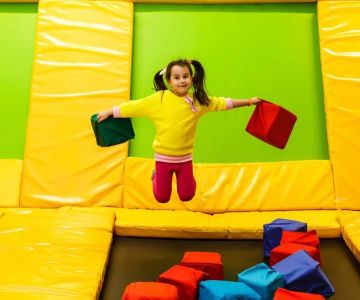
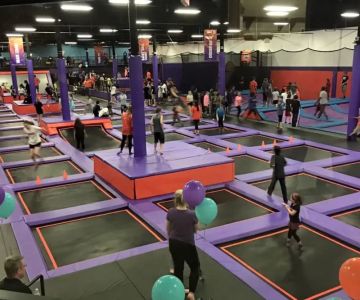
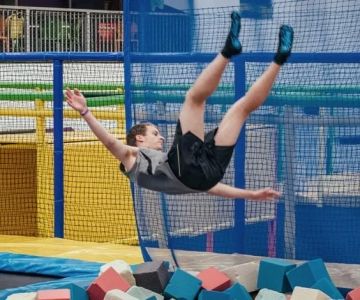
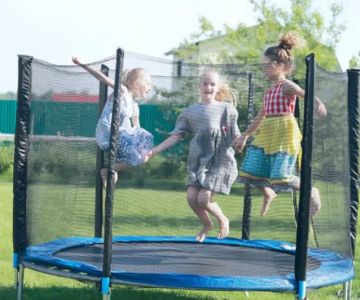

 Zap Zone XL4.0 (2483 reviews)
Zap Zone XL4.0 (2483 reviews) We Rock the Spectrum - Northeast Philly4.0 (190 reviews)
We Rock the Spectrum - Northeast Philly4.0 (190 reviews) Westbank Village Shopping Center4.0 (539 reviews)
Westbank Village Shopping Center4.0 (539 reviews) Super Sky High Bungee5.0 (1 reviews)
Super Sky High Bungee5.0 (1 reviews) Boomers Santa Maria4.0 (1904 reviews)
Boomers Santa Maria4.0 (1904 reviews)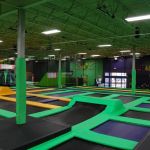 Get Air Pickerington4.0 (651 reviews)
Get Air Pickerington4.0 (651 reviews) Are Trampoline Parks Safe for Kids? Essential Guide for U.S. Parents
Are Trampoline Parks Safe for Kids? Essential Guide for U.S. Parents How Often Should You Replace Trampoline Springs? Tips for Proper Maintenance
How Often Should You Replace Trampoline Springs? Tips for Proper Maintenance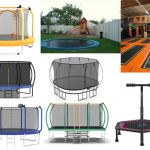 How Much Is a Trampoline? A Detailed Guide to Trampoline Costs and Buying Tips
How Much Is a Trampoline? A Detailed Guide to Trampoline Costs and Buying Tips Bounce Techniques for Stronger Legs: Effective Exercises and Tips
Bounce Techniques for Stronger Legs: Effective Exercises and Tips Essential Music Gear for Trampoline Dance: Complete Guide
Essential Music Gear for Trampoline Dance: Complete Guide Fun STEM Experiments Using Trampolines to Spark Curiosity and Learning
Fun STEM Experiments Using Trampolines to Spark Curiosity and Learning